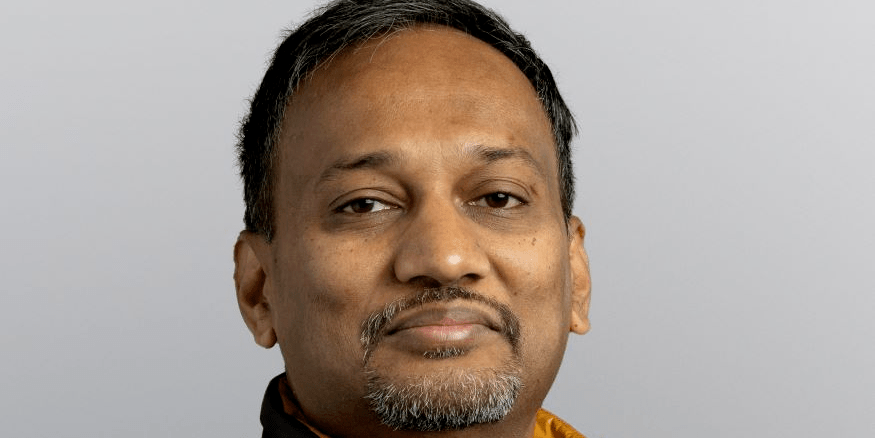Strong collaboration between Applied Materials and the startups Applied Ventures invests in is part of the reason the CVC unit has kept going so long.

Applied Ventures, the corporate venturing arm of advanced materials engineering company Applied Materials, is one of the longest-standing and continuously operating corporate venture investors in the technology sector.
Support from upper management for the unit has been strong from the start. In fact, it was the idea of senior management to bring the outside venturing activities in-house to drive better strategic engagement.
The venturing unit was originally started in 2001 but set up as an external fund, managed by VC professionals on Sandhill Road. The management of Applied Materials then decided to bring this investment activity in-house. This idea is the opposite of what we see today in cases where CVC units being spun out and externalised.
Anand Kamannavar, global head of Applied Ventures, joined the team around the time when corporate venture investing was brought in-house.
He explains the rationale behind it in simple and practical terms: “The main reason was to tie the venture capital arm with the parent company. Being part of Applied Materials made it much easier for us to stay closer to innovation. As an external fund, it would have been very hard to stay closer to innovation and have a holistic view, as well as provide support to startups from Applied through active collaboration and JDAs”
Growth milestones
Along the way, the capital allocation to the fund increased. “We started the fund with an annual allocation of around $25m per year. We changed it to $50m in a few years – so that was $50m per year until 2021. Last year, given the changes in the venture ecosystem and our experience, the Applied senior executive team and the board agreed that we needed to go big and start leading investments.
“We never led in deals before nor asked for a board of director seat before. We are now allowed to invest up to $100m a year. We haven’t reached that amount yet, but I think that’s the right amount to be able to deploy and invest globally given our investment focus in the broader Materials to Systems™ stack.”
Kamannavar points out that being able to lead a syndicate globally was a milestone, too. “We have led investments in Asia and Europe, so that is now a significant part of the fund’s charter.”
The geographic scope of the unit has been and remains global. It has invested in 17 countries since 2006. By the end of the year, he expects it will have reached 18 or 19 countries. It made its first investments in Korea, Singapore, India and then in a lot of European countries in the late 2000s.
Keys to longevity: financial success and internal collaboration
Applied Ventures prides itself on investing early in technologies that would later gain more public attention. In 2015, its team developed a thesis around environmental, social and governance (ESG) and invested in Solid Energy, a startup providing heat pumps for power plants, in 2016, which was listed publicly in 2022.
“Few people at the time were talking about lithium-ion and lithium-metal batteries. Today, everyone is. The same is true for flat and engineered optics. We invested, for example, in Metalenz, which spun out from Harvard in 2017.”
Applied Ventures has also invested in deeptech sectors such as advanced packaging, advancing Moore’s Law, optics and photonics, advanced memory, as well as software for automation.
The endeavour of spotting big opportunities early has been both strategically and financially rewarding for Applied Ventures. Kamannavar highlights a few examples: “Solid Energy went public earlier this year in a very tough IPO market. We had invested in them at an approximately $50m valuation and now the company is worth $2bn.
“Similarly, in energy efficiency technologies, we invested in an energy management systems company called Enphase. We were one of the very early investors when the valuation was less than $10m. Today, it is a $40bn public company.” Enphase is one of the relatively few public companies whose stock price seems to have withstood the carnage of the 2022 bear market. Its stock price has risen nearly 50% since the beginning of 2022.
Kamannavar attributes the longevity of the unit to achieving both strategic and financial goals: “Having been successful both strategically and financially has been key for the longevity of the unit.”
What has kept the unit going for so long? According to Kamannavar, it is internal cohesion, emanating from a “very strong collaboration with the business units and startups”. Over the past two decades, while there have been changes in the leadership of the corporate parent, according to Kamannavar, leaders in Applied Materials understand the value that Applied Ventures brings and the startups they collaborate with: “It´s not a challenge for any of the business units to work with startups. It is a part of their ingrained process. The Applied business units and Applied Ventures team have quite a bit of experience working with startups”.
Now trying a new model
Applied Ventures has now set out what it dubs “CVC 2.0” by partnering with other strategic investors internationally to co-create funds with them. “We have partnered with Taiwanese fund called ITRI and ITIC. We also have a joint fund with Korea through KVIC. Those two allow us to partner with key players, as we invest globally. In the Korean fund, we and KVIC are the only LPs, while in Taiwan, we have other key player LPs as part of the engagement. We are the GPs of those and manage them. This is a step away from the traditional CVC model, where it is just the corporate parent investing,” says Kamannavar. Read more about this in our recent piece here.
He acknowledges, however, that step did not come without organisational challenges: “We had to set up a structure much like that of a traditional VC to maintain proper relations with LPs. Those are some of the things that a typical CVC doesn’t have to do but we have taken the lead and shown how it can be done. I’m very thankful to all of our partners for helping set up this model.”
This is not the first time Applied Ventures has been involved with external partners in a big way. The CVC also partnered with Empire State Development, New York State’s economic development organisation, on a co-investment initiative that gives startups access to the Materials Engineering Technology Accelerator (META Center). The centre opened in 2019 and features state-of-the-art process systems to help shorten the time from lab to fab.











